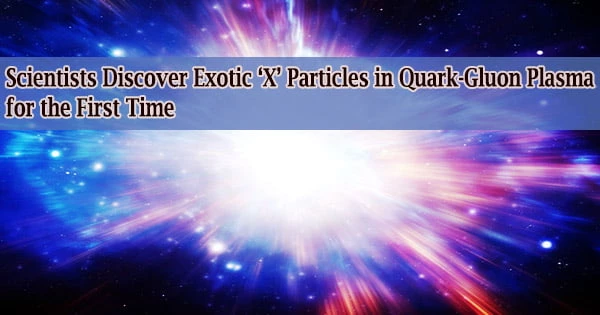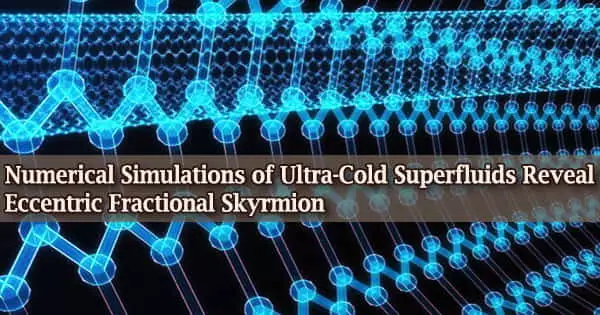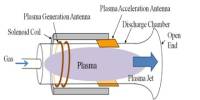The universe was a roiling, trillion-degree plasma of quarks and gluons elementary particles that briefly glommed together in countless combinations before cooling and settling into more stable configurations to form the neutrons and protons of ordinary matter in the first millionths of a second after the Big Bang.
A percentage of these quarks and gluons interacted randomly in the chaos before cooling to produce short-lived “X” particles, so named for their strange, unknown forms. X particles are extremely rare today, while physicists predict that they could be generated in particle accelerators via quark coalescence, in which high-energy collisions produce comparable flashes of quark-gluon plasma.
Physicists from MIT’s Laboratory for Nuclear Science and other institutions have discovered evidence of X particles in the quark-gluon plasma created in CERN’s Large Hadron Collider (LHC), which is located near Geneva, Switzerland.
The researchers sifted through more than 13 billion heavy ion collisions, each of which created tens of thousands of charged particles, using machine-learning algorithms. The researchers were able to extract roughly 100 X particles from this ultradense, high-energy particle soup, of the type known as X (3872), called after the particle’s estimated mass.
The findings, which were published in Physical Review Letters, are the first detection of X particles in quark-gluon plasma, an environment that researchers hope may offer light on the particles’ as-yet-unknown nature.
“This is just the start of the story,” says lead author Yen-Jie Lee, the Class of 1958 Career Development Associate Professor of Physics at MIT. “We’ve shown we can find a signal. In the next few years we want to use the quark-gluon plasma to probe the X particle’s internal structure, which could change our view of what kind of material the universe should produce.”
The CMS Collaboration, an international group of scientists that manages and collects data from the Compact Muon Solenoid, one of the LHC’s particle detectors, is one of the study’s co-authors.
Theoretically speaking, there are so many quarks and gluons in the plasma that the production of X particles should be enhanced. But people thought it would be too difficult to search for them because there are so many other particles produced in this quark soup.
Yen-Jie Lee
Particles in the plasma
The neutron and proton are the fundamental building units of matter, each consisting of three firmly bonded quarks.
“For years we had thought that for some reason, nature had chosen to produce particles made only from two or three quarks,” Lee says.
Exotic “tetraquarks” particles produced from a rare combination of four quarks have just recently been discovered by scientists. Scientists believe that X (3872) is either a compact tetraquark or a whole new type of molecule made up of two loosely connected mesons subatomic particles, which are themselves made up of two quarks, rather than atoms.
The Belle experiment, a particle collider in Japan that smashes together high-energy electrons and positrons, initially identified X (3872) in 2003. The uncommon particles, on the other hand, disintegrated too quickly in this environment for scientists to investigate their structure in depth. It’s been suggested that in quark-gluon plasma, X (3872) and other unusual particles would be better illuminated.
“Theoretically speaking, there are so many quarks and gluons in the plasma that the production of X particles should be enhanced,” Lee says. “But people thought it would be too difficult to search for them because there are so many other particles produced in this quark soup.”
“Really a signal”
Lee and his colleagues investigated for X particles in the quark-gluon plasma created by heavy-ion collisions at CERN’s Large Hadron Collider in their new study. They used data from the LHC’s 2018 dataset, which contained over 13 billion lead-ion collisions that produced quarks and gluons that scattered and combined to generate over a quadrillion short-lived particles before cooling and fading.
“After the quark-gluon plasma forms and cools down, there are so many particles produced, the background is overwhelming,” Lee says. “So we had to beat down this background so that we could eventually see the X particles in our data.”
The scientists did this by training a machine-learning algorithm to recognize decay patterns that are characteristic of X particles. When quark-gluon plasma particles develop, they immediately split down into “daughter” particles that scatter away. This decay pattern, or angular distribution, for X particles, is different from all other particles.
Key variables that govern the geometry of the X particle decay pattern were uncovered by the researchers, lead by MIT postdoc Jing Wang. They used a machine-learning method to train it to recognize these variables, and then gave it data from the LHC’s collision experiments.
The program was able to sift through the dense and noisy dataset and identify the main variables that were most likely caused by decaying X particles.
“We managed to lower the background by orders of magnitude to see the signal,” says Wang.
The researchers zoomed down on the signals and noticed a peak at a specific mass, indicating the existence of around 100 X (3872) particles.
“It’s almost unthinkable that we can tease out these 100 particles from this huge dataset,” says Lee, who along with Wang ran multiple checks to verify their observation.
“Every night I would ask myself, is this really a signal or not?” Wang recalls. “And in the end, the data said yes!”
The researchers plan to collect much more data over the next year or two, which should aid in elucidating the structure of the X particle. The particle should decay more slowly if it is a strongly bonded tetraquark rather than a loosely bound molecule.
Now that the team has demonstrated that X particles may be detected in quark-gluon plasma, they intend to investigate this particle in further depth using quark-gluon plasma to pin down the X particle’s structure.
“Currently our data is consistent with both because we don’t have a enough statistics yet. In next few years we’ll take much more data so we can separate these two scenarios,” Lee says.
“That will broaden our view of the kinds of particles that were produced abundantly in the early universe.” This research was supported, in part, by the U.S. Department of Energy.
















